
- Home
- About Us
- Hall of Fame
- UF/IFAS Blueberry Extension
- Blueberry Fans
- Grower
- Contact Us
Florida blueberry growers are battling Mexican farmers for their lucrative spring marketing window. With the Mexican blueberry crop up 70 percent, supplying more than double the estimated Florida crop of 18 to 20 million pounds in 2017, the Florida Blueberry Growers Association is supporting an update of the North American Free Trade Agreement (NAFTA).
Blueberry crop insurance has been available in Florida for over 15 years. It started as a pilot program in Alachua and Highlands counties and is now available in 14 counties. There have been improvements in the traditional crop insurance as well as the introduction of the newer Whole-Farm Revenue Protection (WFRP). There are many Florida blueberry growers protecting their investments with crop insurance. There are still many new farmers who are unfamiliar with it. From time to time, it is always a good idea to review the basics. Crop insurance is no exception.
Successful farmers are the most innovative bunch you’ll ever meet. On the flipside of those successful farmers, however, are the people formerly known as “farmers”— the ones who didn’t innovate, change with the times, and try new things. The failure to innovate comes down to a handful of excuses:
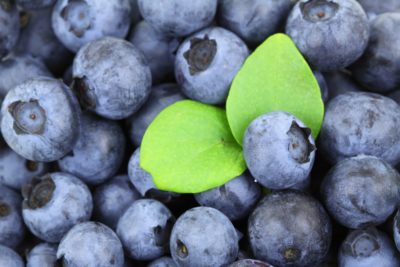
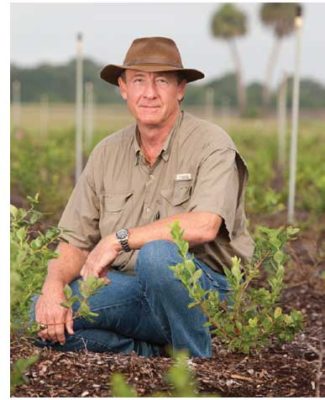

Reports on the extent of damage in the blueberry industry from Hurricane Irma varies across the state— from plants being pulled out of the ground to leaves blown off, and really depends on the location of the farm in Irma’s path. We will not know the full extent of the damage until the blueberry harvest concludes next spring.
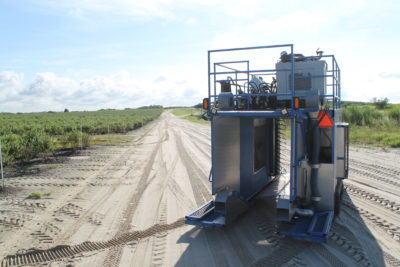
Over the past 30 years, blueberry production has grown by leaps and bounds. However, current methods of hand-picking berries for the fresh market have resulted in bottlenecks in terms of sustainable production. More growers are looking at the benefits of mechanical harvesting in order to increase their yields throughout the season. Historically, one of the main problems with machine harvesting is the bruising of the fruit caused by the berries falling into the collecting trays. Another issue has been ground loss of berries due to them not falling into the trays. Researchers are taking these problems into consideration and devising new harvesting techniques to help reduce bruising and loss.
The damage from Hurricane Irma has caused significant financial loss to Florida growers in sales revenue from crops lost or delayed and clean up expense. This article is a compilation of disaster programs and resources to assist the agriculture industry. Most importantly, be sure to document all of your damages and expenses associated with the hurricane— save receipts, take photos and videos, and make notes for applying for assistance programs. Scan the QR codes with your smart device for additional information.
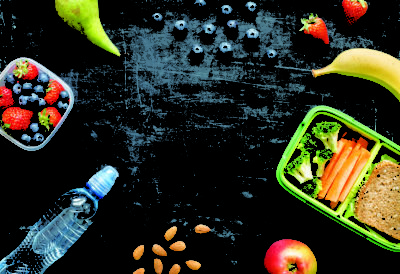
Bob Wilhelm packed the blueberries in five-pound boxes. The schools served them in fruit cups and used them to teach math. “They [fusion_builder_container hundred_percent="yes" overflow="visible"][fusion_builder_row][fusion_builder_column type="1_1" background_position="left top" background_color="" border_size="" border_color="" border_style="solid" spacing="yes" background_image="" background_repeat="no-repeat" padding="" margin_top="0px" margin_bottom="0px" class="" id="" animation_type="" animation_speed="0.3" animation_direction="left" hide_on_mobile="no" center_content="no" min_height="none"][the children] loved it. They sent some great pictures of the kids eating them for snacks,” says Wilhelm, owner of the Boca Raton-based Bova Fresh. “They seemed to make it very interactive with the kids. It was nice to see.”
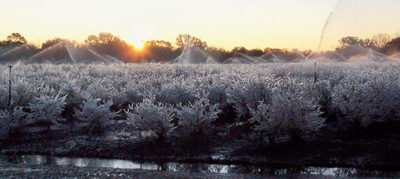
ENSO affects surface water temperatures in the southern Pacific Ocean and the track of upper-level wind currents (jet stream) within North America. The location of the jet stream affects the tracks of weather systems as they move across the continent.
Weeds compete with blueberry for water and nutrients, which inhibits bush growth and yield. Weed control options include preventative, mechanical, and chemical weed control options. A proper ID of weeds is important for selecting the correct method of control.
Ongoing research in our program is evaluating the potential use of sparkleberry (Vaccinium arboreum) as a rootstock for southern highbush blueberry (SHB). Blueberry plants are shallow-rooted and require soils with low pH and high organic matter content. Under current management systems in the southeastern U.S., SHB is frequently subjected to a variety of stresses including periodic drought stress, and adverse soil conditions such as insufficient soil organic matter and/ or high soil pH. Moreover, the multi-cane SHB crown is not adapted to the current mechanical harvester designs because catch plates do not seal effectively around the base of plants. The result is fruit dropping to the ground during machine harvesting (see Figure 1).
<strong>Beetles vs Blueberries</strong>
Post-harvest foliage management is important for blueberries produced in both deciduous and evergreen systems in Florida. Healthy leaves maintained through flower bud differentiation in fall will ensure sufficient carbohydrate (sugar) reserves for uniform, early, berry production and leafing the following spring in deciduous production. In evergreen systems, foliar diseases that carry over on leaves reduce the vigor of plants, but also can produce spores that infect fruit. Anthracnose and rust pathogens infect both leaves and fruit and can lead to post harvest fruit rot (ripe rot) and fruit quality issues (rust infection of fruit). Some varieties are more susceptible to summer foliar diseases than others. Jewel is an older variety still widely grown that suffers from several foliar fungal diseases during the hot humid Florida summers.